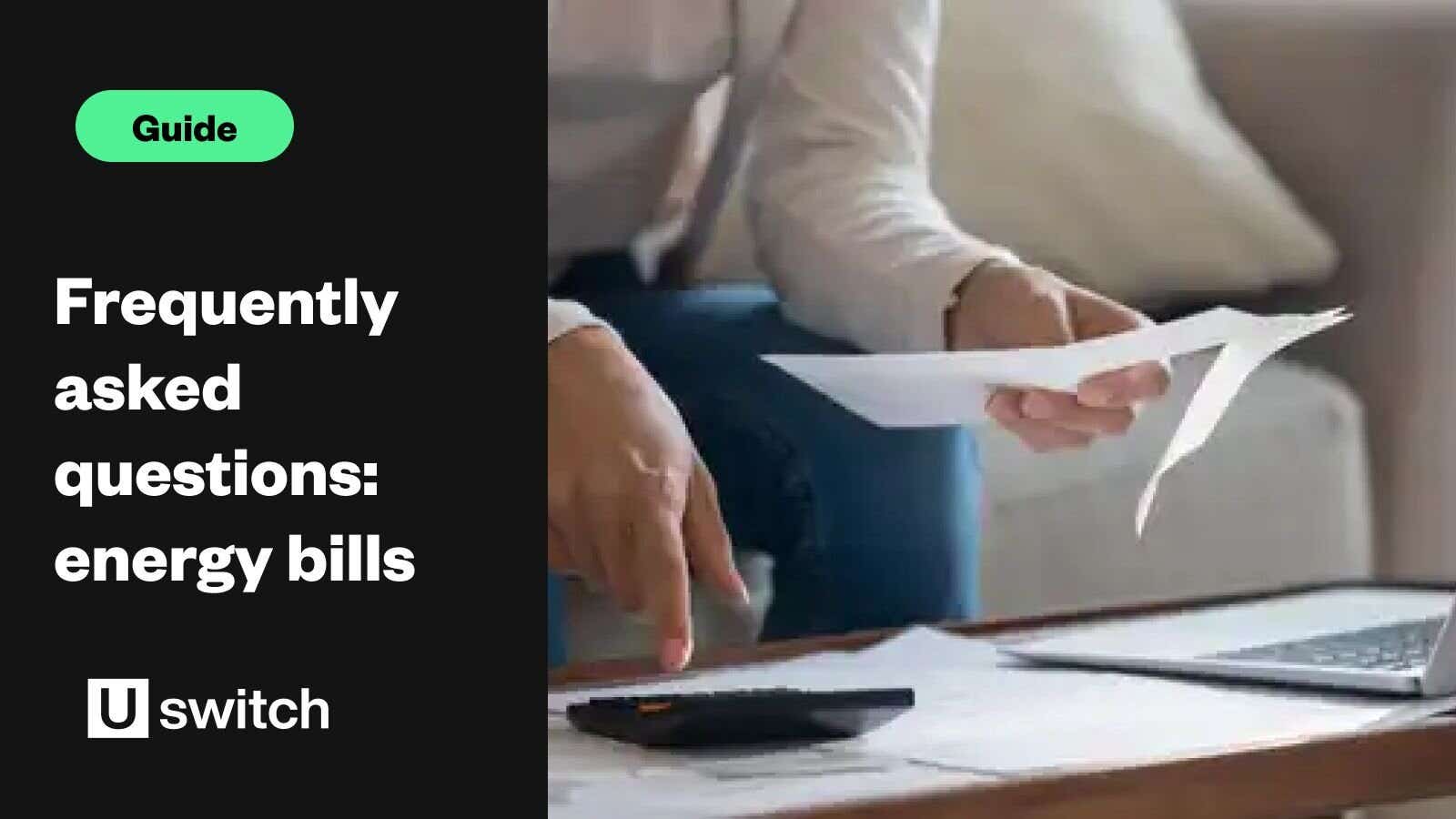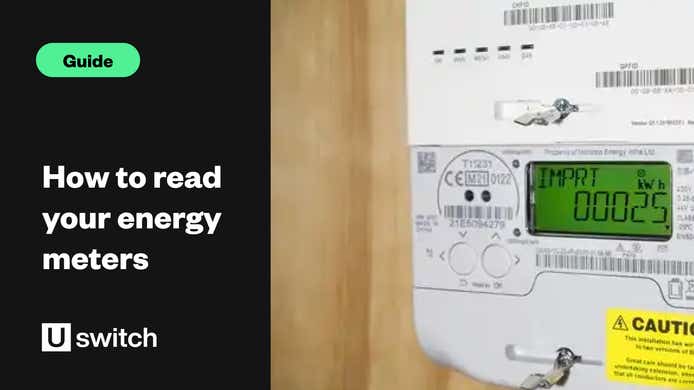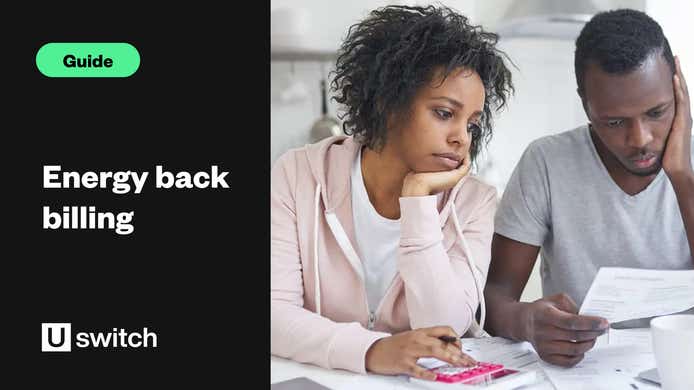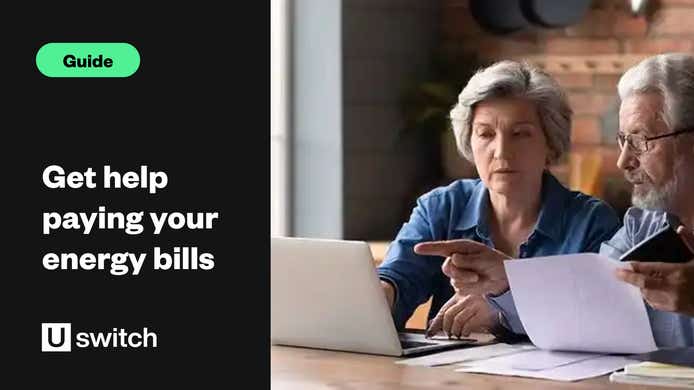How do I read my energy bill?
We've put together a sample of the most popular suppliers' energy bills. These energy bill breakdowns might not look exactly like your bills — because you may pay differently than the sample, have a different meter, or only have one fuel — but the bill layout for your supplier should generally be the same, making it easy to spot key items like your annual consumption, plan name, early exit fee info and annual usage.
How to read major suppliers' energy bills
Click below to see examples of bills from major suppliers along with information about how to read them.
I have different requirements when reading bills or small print - what are my options?
Like every company, energy suppliers are obliged not to discriminate against customers under the Equality Act. This means that they are obliged to offer accessibility options to customers who have different needs when it comes to reading their bills.
This can include:
Receiving bills in large print
Receiving bills in Braille
Receiving bills in a different language.
Many suppliers will provide these service at no additional cost for customers on the Priority Services Register, which customers may wish to join if they require additional help and support when it comes to managing their energy supply. Otherwise, you may need to make a specific request to your supplier.
Still have questions about your bill? Check our jargon buster section below for definitions for everything from "calorific value" to "NSC".
Why do I have a duplicate electricity bill?
The two most likely reasons you have received a duplicate electricity bill (or back bill) are:
Errors from your supplier
You've underpaid due to estimated billing.
Errors from your supplier
It is not uncommon for energy suppliers to send additional bills to households in an effort to recoup money lost due to their own internal system errors. In 2017 alone, Uswitch found that 1.3 million customers have been overcharged due their supplier's mistakes.
These mistakes include tariff details being wrong, incorrect fees being applied, submitted meter readings provided not being applied and incorrect direct debit taken, to name a few.
For more help, read our guide to energy back billing.
Estimated billing errors
Estimated billing is when your supplier has to estimate your energy usage because you haven't supplied them with regular meter readings. And when a meter reading is eventually collected (usually annually), the supplier may find you've not been paying enough to cover your actual usage.
In this case, you do in fact owe your supplier so, to avoid shock bills such as this, be sure to submit regular meter readings.
What is paperless energy billing?
Paperless billing is just as it sounds — you receive your monthly or quarterly bills through an online account you must set up with your supplier. Opting for paperless billing almost always comes with a discount (e.g. the same tariff can otherwise cost £30 more per year if you don't opt for paperless billing).
You may be less likely to check your energy bills if they're not coming through your letterbox, but don't be tempted to skip reviewing your costs. As outlined above, there are often mistakes that could cost you hundreds if left unnoticed!
Why do energy bills have QR codes on them?
Suppliers are required to put a scannable code on every bill. This code contains all the relevant info you would need to compare and switch energy tariffs, including supplier name, tariff name and your annual usage. It takes the pain of hunting info out of your bill and makes it as easy as taking a snapshot for an instant energy comparison.

How can I get electricity without a deposit?
If you want to switch your electricity prepayment meter to a standard credit meter you will need to contact your energy provider. Your energy provider might charge you for the installation, but you will also need to have cleared your account so that there is no debt to be paid. Your energy provider might also run a credit check to make sure you will be likely to keep up with the bill payments on a standard credit meter.
Find out how to change your meter here. And if your supplier makes it difficult to switch to a standard meter, then consider switching to another supplier who will do it for you at no cost.
Is electricity considered a utility?
Yes, electricity is a utility. Electricity, gas and water are all considered utilities. Utilities can also refer to any other essential bills you pay for, including broadband, your Council Tax and TV licence. Uswitch helps you compare and save on utilities such as gas and electricity and on your broadband.
How do I find the latest electricity news?
Uswitch's energy news covers the latest issues in the gas and electricity industry that could impact Britain's household bills, including price rise announcements, consumer tips and more. You can also filter the Uswitch energy news section to read up on matters relating to electricity, price rises, and by supplier, if you want to see what your provider was up to. It's a good idea to be informed so you're ready to make the switch in the event that electricity prices start to rise.
Who is the electricity regulatory authority?
Ofgem (the Office of Gas and Electricity Markets) is the electricity regulatory authority in the UK. Ofgem aims to regulate the market for the electricity and gas markets in a way that increases competition among suppliers and offers cheaper energy to consumers.
Ofgem also manages the Confidence Code, which is a voluntary set of guidelines for energy price comparison sites such as Uswitch. The code requires that comparison sites provide comprehensive and accurate information to consumers about energy suppliers and deals. Bear in mind that not all price comparison sites adhere to the code, so it's well worth checking before you compare.
What electricity safety tips do you recommend?
Electrical safety in the home is important, yet often overlooked. Here are a few tips to keep you and your home safe:
- Avoid overloading electrical sockets.
- Keep flammable items away from electric heaters.
- Regularly check for worn cables and wires.
- Take care when using electric blankets and portable heaters.
- Always use a converter with foreign appliances.
Get more electricity safety tips to follow in our guide to electrical safety.
Energy bills glossary of terms
Our glossary lists all the terms you're likely to find, either on your bills or across our site.
Account number
Your account number is how you reference your specific account when contacting your current supplier. This number will be printed on your bill and may also be called your customer number.
Calorific Value (CV)
'Calorific Value' (CV) is a scientific term used to describe how much heat is generated when a known volume of gas is completely burned away. Gas passing through the National Grid has a CV of 37.5MH/m3 to 43.0MJ/m3, but the CV for your specific area should be displayed on your gas bill. Put simply - the CV measures how 'useful' your gas is, so your supplier can charge you based on the quality of the gas that is supplied to you.
For more information on calorific values and how they're calculated, please refer to the National Grid website.
Discounts
If you have any discounts such as dual fuel applied to your energy bills, it will be marked clearly near the final total. In an effort to make your energy costs clearer, Ofgem places limitations on the kinds of discounts suppliers can offer. Therefore, the most common discounts are dual fuel discounts and direct debit discounts.
Dual fuel
Dual fuel is where you receive your gas and your electricity supply from the same energy company. You can often receive a discount from your energy supplier by doing this.
Economy 7
Economy 7 is a type of electricity tariff that uses different prices for the electricity you use during the day and the electricity you use during the night. Typically the electricity you use at night will cost you less than electricity used during the day. With Economy 7, the 'night' usually refers to the early hours, between around 1am to 8am, but these hours can vary between suppliers.
Economy 10
This structure gives you three off-peak hours in the afternoon, two in the evening and five hours overnight. The designated hours will change between suppliers. Unfortunately we cannot support Economy 10 switching on Uswitch.
Read more about Economy 10 tariffs here.
Estimated (E) or actual (A) readings
If your meter reading has been estimated that means your energy supplier has assumed your usage for the bill period based on your past consumption. If they don't have information on your previous usage (you just moved or just switched), they will use national average figures to estimate your consumption and your therefore your costs. If you have submitted a reading or your supplier has sent someone to take a reading, then this will appear as "actual" on your bill. Where this info appears on your bill will vary by supplier. Check the sample bill links above for help.
Tip: To ensure your bills are as accurate as possible — and to avoid under- or overpaying for your energy — it is best to submit your own meter readings. If you're not sure how to take a meter reading, read our guide on taking a gas or electricity meter reading
Fixed Monthly Direct Debit (MDD)
If you hold a monthly direct debit with your supplier, then you will pay a set amount to your supplier every month. However this does not mean that unit rate is fixed, as is the case with fixed price plans. Your energy supplier needs to give you notice if they intend to change the amount of the monthly direct debit, which may occur during seasons change and your usage goes up or down.
How to convert units to kWh
On your energy bill, your gas units will be converted to kilowatt hours. Please note that the Calorific Value will change depending on your area - so please check your bill for the correct figure. Use the following formula to convert units to kWh:
Total units used x metric conversion factor (2.83) x volume correction factor (1.02264) x calorific value /kilowatt hour conversion factor (3.6).
This works for meters that record hundreds of cubic feet where your gas meter shows 'ft3' next to the reading. If your meter measures in cubic meters with an 'm3' next to the reading, then go through the same sum while removing the metric conversion factor of 2.83.
Example for meter that records hundreds of cubic feet:
1 unit x 2.83 x 1.02264 x 39.1 / 3.6 = 31.43 kWh
IGT Network/charges
IGT stands for 'Independent Gas Transporter'. If your home is supplied by an Independent Gas Transporter Network, it means that it is not connected to the National Grid, which supplies most of the UK's home's with gas. If your MPRN number is 10 digits long and begins with 74 or 75 then you are supplied by an IGT.
It used to be that IGT homes had an extra charge on their bills associated with this supply method, but recently this cost has been absorbed by the big six suppliers — though some smaller suppliers may still charge. If you are being charged as an IGT home, you can call your supplier to discuss your options, and remember you can still switch energy if you are on an IGT supply.
Kilowatt hours (kWh)
A kilowatt hour is the standard measurement of energy that your energy supplier will use to bill you. A kilowatt hour refers to a person using 1,000 watts of electricity for one hour. Your prices will be set per kilowatt hour (kWh) of energy you use.
Loyalty points
Loyalty points will only apply to certain tariffs, and can come in different forms. These points can be earned on energy bills with suppliers that have a commercial arrangement with specific supermarkets or shops. The number of points you've accrued should be displayed clearly on your bill.
Meter point administration number (MPAN)
Your meter point administration number will often be referred to as your MPAN or your supply number. It can also be referred to as your 'S' number. This number is assigned to the electricity meter at your property to identify it, and can be found on your electricity bill. If you can't find your MPAN or supply number, use our energy bill breakdown above for your supplier to locate it.
Meter point reference number (MPRN)
Your meter point reference number will often be referred to as your MPRN number. This number is assigned to the gas meter at your property, and can be between six and 10 digits long. On your bill this number may be referred to as an 'M' number, but if you can't find it you can use our energy bill breakdown above for your supplier to locate it.
Metric conversion factor
An imperial to metric conversion factor of 2.83 is used in the calculation to convert units into kilowatt hours (kWh).
NSC (No Standing Charge)
If you are on an older energy plan, your bill may includes the abbreviation 'NSC' or the words 'No Standing Charge', which means your supplier does not apply a fixed daily charge to your plan. In an effort to make your energy costs clearer, Ofgem banned "No Standing Charge" plans, requiring that all suppliers charge a daily rate. This rate is not set by Ofgem, so you can still get an NSC plan of sorts by finding a supplier with a "charge" of zero for the standing charge fee. Just be sure to check the kWh rate is also competitive.
To find your standing charge amount on your bill, use the energy bill breakdown link above for your supplier.
Plan/tariff name
The name of your energy plan identifies which tariff you are on, which in turn dictates the prices you are charged. Although Ofgem has worked to reduce the "clutter" of plans on the market, there are hundreds of different plans available, and naming conventions will differ between suppliers. You need to know your plan name in order to switch. You can find this info on your bill, and you can use our energy bill breakdown info above to quickly locate it for your supplier's bill.
Standing charges
All energy plans now include a standing charge. A standing charge is a fixed daily charge meant to cover the costs of keeping your home connected to the grid. The idea is that by separating out this daily non-energy-consumption related charge from your unit rate, what you are charged for is made more clear. You can still effectively get a "no standing charge" plan by looking for a supplier that charges zero for their standing charge. To find out what your standing charge is, check your bill. If you have trouble locating it on your bill, use our energy bill breakdown links at the top of the page.
Standing Order
If you hold a standing order with your energy supplier, you have arranged for a fixed amount to be sent from your bank account to pay your energy bill as often as necessary. You have control of this payment method, so your energy supplier cannot change the payments at their end, even with your permission.
Supply number
Your supply number can also be referred to as your MPAN or electricity meter point administration number.
Units
Although your gas will be charged according to kilowatt hours (kWh) used, your gas will initially be measured in units. This is then converted to kilowatt hours on your bill using a standard formula. Find out how to convert kWh into units.
Variable Direct Debit (VDD)
If you have a variable direct debit set up with your energy supplier, then you are giving it control over the direct debit. It will amend the amount taken each month to pay off the outstanding bill, and they do not have to give you notice before changing the amount.
VAT
VAT will be charged on top of your total bill at a standard rate of 5% instead of the usual 20%. It is important to note that your gas and electricity bills will show all unit prices before VAT, whereas Uswitch is required to display all unit prices with VAT included. This allows us to make the most accurate and relevant comparison for you.
Volume correction factor
The volume correction factor of 1.02264 takes into account the changes in the volume of gas based on temperature and pressure.




